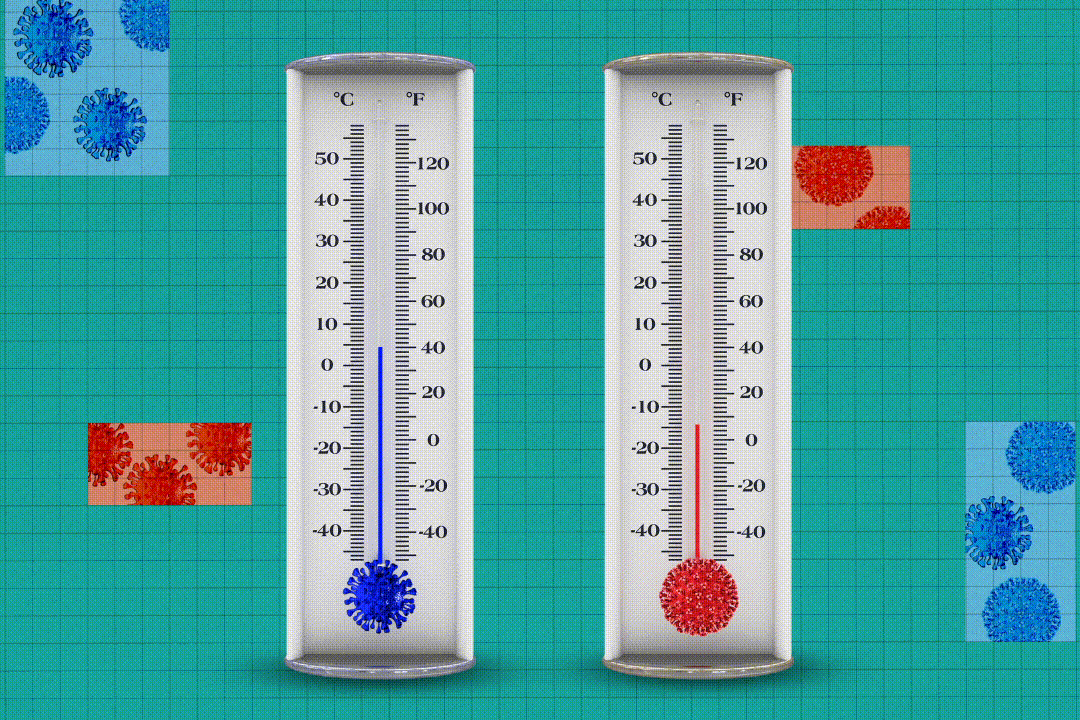New poll finds over a third of Americans think COVID and the flu are 'about the same'

At the beginning of the pandemic, then-President Donald Trump made frequent claims that COVID-19 was “like a flu” — despite consensus among most health officials that COVID was at least several times more lethal than the flu. Three years later, it appears many Americans now share that sentiment, with a new Yahoo News/YouGov poll finding that 41% of Americans think the flu is either about the same or more severe than COVID.
The survey — which included a nationally representative sample of 1,636 U.S. adults and was conducted from Sept. 14 to 18 — asked participants how COVID-19 compares to influenza. The poll found that 41% believe that “COVID is more severe,” while 34% said COVID and the flu are “about the same” and 7% said the flu is “more severe.” The survey also found that 18% weren’t sure.
Over a quarter of Americans (27%) believe that COVID is comparable to a cold, but more than half of Americans (55%) said COVID is “more severe” than a cold.
How COVID and the flu are similar
At the onset, COVID and the flu can appear similar.
Both are contagious respiratory illnesses: The Centers for Disease Control and Prevention says that both the flu and COVID are “contagious respiratory viruses” — but they’re caused by different viruses. COVID is caused by infection with a coronavirus (SARS-CoV-2) first identified in 2019, while the flu is caused by infection with an influenza virus. They both spread through person-to-person contact, primarily via respiratory droplets.
COVID and flu share some symptoms: “Both can cause upper respiratory symptoms as well as lower respiratory symptoms, including pneumonia. And so in that respect they are very similar,” Dr. Dean Winslow, a professor of infectious diseases at Stanford University School of Medicine, tells Yahoo Life. Bethany DiPrete, an assistant professor of epidemiology at the University of North Carolina, also points out that early on, the symptoms for both can be hard to distinguish from each other. “If you have fever, cough, chills, fatigue, sore throat, it's very hard to determine in that beginning acute phase whether you have COVID or flu,” she tells Yahoo Life.
How COVID and the flu are different
Despite some similarities, there are considerable differences between the two respiratory infections.
How they're spread: COVID-19 spreads more easily than flu, according to the CDC. “COVID is a lot more contagious than flu, and people tend to stay contagious so they can spread it to others for a longer period of time,” DiPrete adds.
Likelihood of severe illness: The CDC also notes that, although both COVID and the flu can cause severe illness, overall, COVID seems to cause more severe illness in some people. “On a population level, I would say that COVID is more serious, and the numbers show that,” DiPrete says. “We see more hospitalizations, deaths — and the thing is, this can also happen if you consider yourself to be perfectly healthy. While the flu does also have high death rates, COVID tends to result in more severe disease.”
Death rates: In the 2022-2023 fall and winter season, a study of health data from the Department of Veterans Affairs found that being hospitalized for COVID was associated with an increased risk of death compared to hospitalization with the flu. To put that in context, the study authors pointed out that there was “a 2 to 3 times greater number of people being hospitalized for COVID” vs. the flu in the U.S. at that time. But the study authors also noted that the difference in mortality rates between COVID-19 and flu “appears to have decreased since early in the pandemic.” One likely reason COVID case fatalities were so high in 2020 and 2021, Winslow says, is that much of the population still had no immunity to the new virus from vaccines or prior infection. However, he says that it’s too early to compare the most recent COVID death rates with this flu season, which runs from about October to March.
The political divide on COVID
The Yahoo News/YouGov poll also found that public opinion of COVID and the flu was markedly different depending on political affiliation.
Half of Republicans (51%) believe that COVID and the flu are about the same, compared to 22% of Democrats. The poll found that 63% of Democrats vs. 23% of Republicans said COVID is more severe than the flu, and 5% of Democrats and 9% of Republicans said the flu is more severe. Republicans were also more inclined than Democrats to liken COVID to a cold, with 44% of Republicans and only 14% of Democrats saying they are about the same.
The politicization of COVID-19 and the vaccine is nothing new, with some research showing it has led to a higher excess death rate among registered Republicans. One pandemic-era survey found the political chasm may extend beyond COVID, and that partisan feelings about science in general have changed over time: The 2021 Gallup poll found that “Republicans today are much less likely than their predecessors in 1975 to have confidence in science,” whereas Democrats today have more confidence in science than Democrats in the ‘70s.
“I think it’s sad that basically ideas about science and protection have become so politicized,” Winslow says. “Back when I was growing up, the Republicans were the party of science. Nixon quadrupled the funding of the NIH, he created the Environmental Protection Agency, Endangered Species Act and there wasn’t this political divide about science.”
Heading into the fall and winter, DiPrete recommends that Republicans and Democrats alike get vaccinated for both COVID and the flu.
“They can both result in severe disease,” she says. “COVID is still extremely serious and should be taken seriously, regardless of affiliation.”
